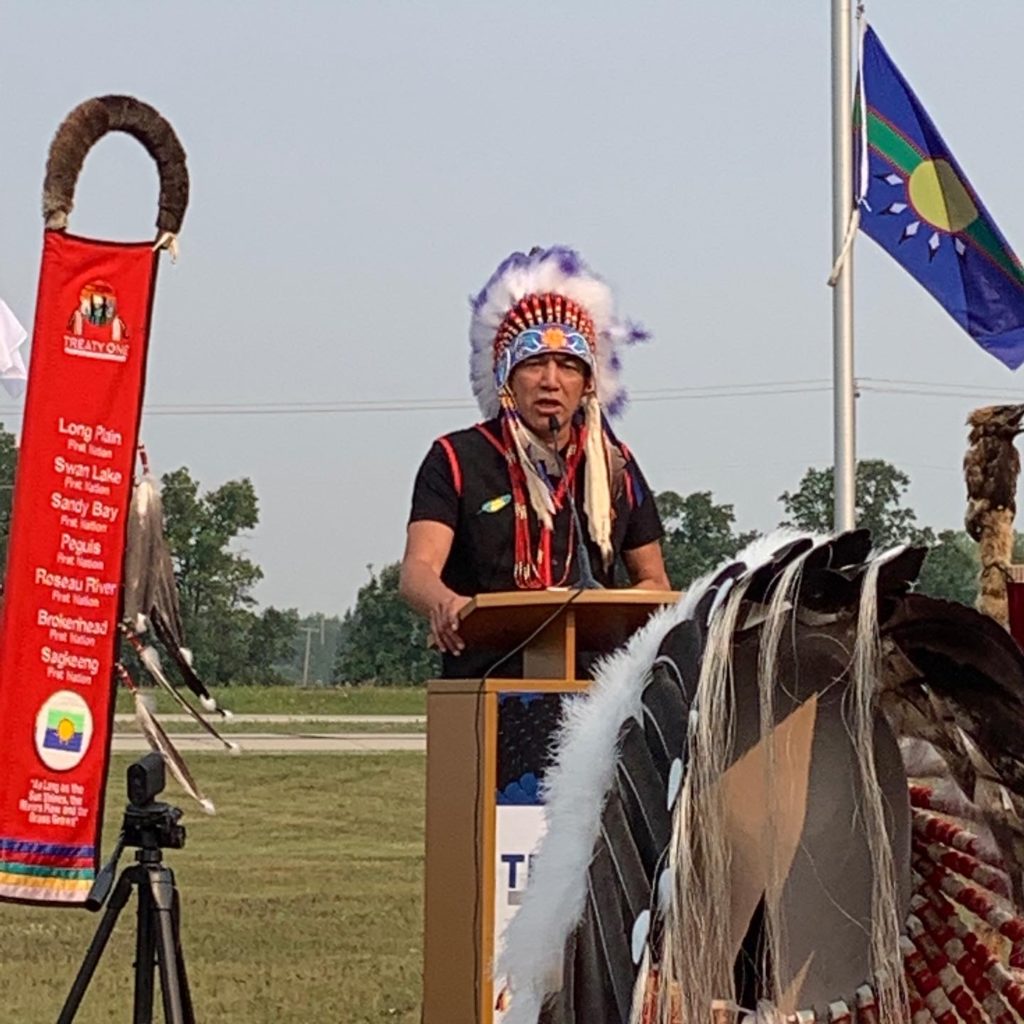Numbered Treaties

Treaty No. 1 was made between the First Nations of Long Plain, Sagkeeng, Brokenhead Ojibway, Sandy Bay Ojibway, Swan Lake, Peguis, Roseau River Anishinaabe and the Crown on August 3, 1871 at Lower Fort Garry, also known as the Stone Fort Treaty.
Treaty No. 2 was made between the First Nations of Keeseekowenin, O-Chi-Chak-Ko-Sipi, Ebb and Flow, Lake Manitoba, Lake St. Martin, Little Saskatchewan, Skownan, Dauphin River, Pinaymootang and the Crown on August 21, 1871 at Manitoba House, located near present day Kinosota, Manitoba.
Treaty No. 3 was negotiated and entered into in October 1873, at Fort Frances, Northwest Angle. This Treaty area lies mostly within the borders of Ontario; however, Manitoba’s Buffalo Point First Nation is a party to Treaty No. 3.
Manitoba communities that share in the benefits and obligations of Treaty No. 3 include: Falcon Lake, Middlebro, Point du Bois and many more. Much of Whiteshell Provincial Heritage Park is within the Treaty No. 3 area.
Treaty No. 4 was negotiated and entered into in September 15 & 21, 1874 at Fort Qu’Appelle, Fort Ellice, Saskatchewan. The larger portion of the Treaty area can be found in Saskatchewan; however, a small part of western Manitoba is covered by Treaty No. 4.
Manitoba communities that share in the benefit and obligations of Treaty No. 4 include: Birch River, Mafeking, Swan River, Westgate and many more. First Nation communities that entered into Treaty No. 4 include: Gambler, Pine Creek, Rolling River, Sapotaweyak, Tootinawaziibeeng, Waywayseecappo and Wuskwi Sipi.
Treaty No. 5 was negotiated and entered into by the largest number of First Nation communities within Manitoba at different locations and times. The first negotiation and concluding of Treaty No. 5 occurred at Berens River in 1875. Manitoba communities that share in the obligations and benefits of Treaty No. 5 include: The Pas, Wabowden, and Gypsumville.
The First Nation communities that entered into Treaty No. 5 include: Chemawawin, Berens River, Black River, Bloodvein, Cross Lake, Fisher River, Grand Rapids, Hollow Water, Kinonjeoshtegon, Little Black River, Mosakahiken, Norway House, Opaskwayak and Poplar River.
Treaty No. 5 Adhesions: 1908-10; Nelson House, Tataskweyak (Split Lake), Norway House, Oxford House, God’s Lake, Deer’s Lake East, York Factory
Treaty No. 6 Adhesions was negotiated and entered into in 23 to 28, & September 9, 1876 at Fort Carlton, Saskatchewan. Two Manitoba First Nations signed its adhesions: Mathias Colomb Band is a signatory to an adhesion signed on August 10, 1889. In 1972 a group of Mathias Colomb band members voted to split and create their own band and council. In 1995 Marcel Colomb First Nation was officially recognized as the 62nd reserve in Manitoba.
Treaty No. 10 August 28 – September 9, 1906; Canoe Lake, Saskatchewan. Two First Nation communities in Manitoba are signatories to Treaty No. 10: Barren Lands and Northlands.
Dakota: Prior to European contact, the Ininiwak and Anishinaabe had Treaty relationships with the Dakota who lived in southwestern Manitoba. Although the Dakota people were not a part of the Numbered Treaties they are recognized as occupying their own lands within Manitoba and have secured alliances and arrangements with the Crown.
All Manitobans currently reside within an area covered by Treaty. In what Treaty area do you live? What is your Treaty story?
